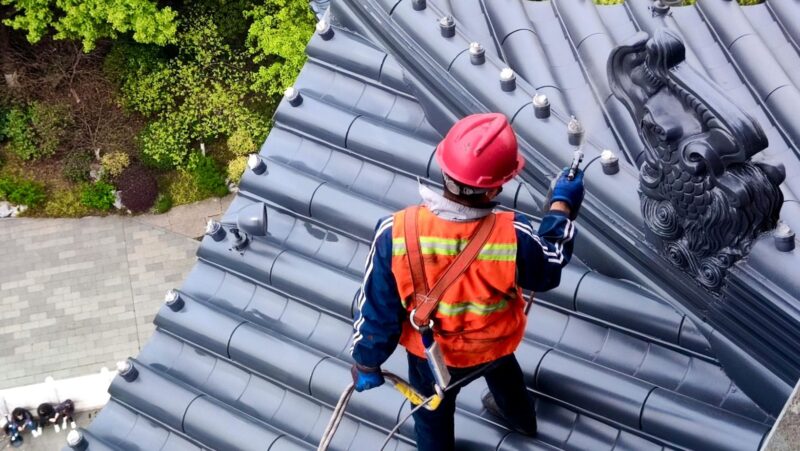
Asphalt shingles have become a popular choice among homeowners looking for cost-effective roofing solutions. Choosing asphalt shingles can potentially save property owners thousands of dollars on repairs compared to other materials. Known for their durability and ease of maintenance, these shingles provide excellent protection against various weather conditions.
The practical benefits of asphalt shingles include their affordability and versatility. They are easy to install, requiring less labor and time, which translates to reduced installation costs. Moreover, their robust design helps resist wear and tear, ultimately reducing the frequency and cost of future repairs.

Another significant advantage is their energy efficiency, which can contribute to lower heating and cooling costs. Asphalt shingles reflect more sunlight, helping to keep homes cooler in the summer and warmer in the winter. This added efficiency not only saves money on utilities but also minimizes the environmental impact. With these benefits, it’s evident why many homeowners are turning to asphalt shingles for their roofing needs.
Benefits of Asphalt Shingle Roofing
An asphalt shingle roof offers several advantages, making it a popular choice for homeowners. These benefits include cost-effectiveness, easy installation, and strong durability. Each of these aspects contributes to why many opt for asphalt shingles when considering roofing materials.
Cost-Effectiveness of Materials
Asphalt shingles stand out for their affordability compared to other roofing options. They provide an economical solution without sacrificing quality. With prices per square foot significantly lower than alternatives like metal or tile, homeowners can save substantially on the upfront costs of roofing materials.
In addition to being budget-friendly, asphalt shingles offer a great value for their lifespan. They often come with warranties that last 20 to 30 years, ensuring long-term savings. The lower initial investment combined with a long-lasting product means fewer replacements and repairs over time.
Easy Installation Process
The straightforward installation process of asphalt shingles appeals to both homeowners and contractors. Due to their lightweight nature, these shingles are easier to handle, allowing for faster completion by roofing professionals. This simplicity reduces labor costs and minimizes disruptions during installation.
Contractors with varying levels of experience can efficiently install asphalt shingles, providing homeowners with flexibility in hiring services. Additionally, the availability of these shingles in standard sizes simplifies the ordering and delivery process. This ease of installation translates into overall savings on time and resources.
Longevity and Durability
Asphalt shingles are designed to withstand harsh weather conditions, contributing to their reputation for durability. They are engineered to resist wind, rain, and even hail to a significant extent. This makes them a reliable option for regions experiencing severe weather patterns.
The longevity of asphalt shingles, bolstered by advancements in manufacturing techniques, has improved their resistance to wear and tear. Modern shingles may include features like algae resistance and UV protection, which further extend their lifespan. Homeowners benefit from reduced maintenance needs and increased peace of mind regarding roof integrity.
Installation Great Practices
Proper installation of asphalt shingles involves choosing high-quality materials, using the right tools, and overcoming common challenges. These steps are crucial in ensuring a long-lasting and damage-resistant roof.
Choosing Quality Shingles
Selecting quality asphalt shingles is essential for durability and resilience. Considerations include weather resistance, lifespan, and warranty.
- Weather Resistance: Choose shingles rated for your climate. For instance, those with high wind resistance are vital in storm-prone areas.
- Lifespan: Opt for shingles with a longer lifespan, often 20-30 years or more.
- Warranty: Examine the warranty offered, which often reflects quality. A robust warranty can cover manufacturing defects and performance issues.
- Certification from reputable associations, like the American Society for Testing and Materials (ASTM), ensures standard compliance. High-quality shingles sometimes offer energy efficiency features that reduce cooling costs in hot climates.
Appropriate Tools and Techniques
Using the correct tools and techniques streamline the installation and ensures effectiveness.
Essential Tools:
- Hammer or pneumatic nail gun
- Utility knife
- Chalk line
- Roofing shovel
- Safety harness and ladder
Installation Techniques:
- Starter Strips: Begin with starter strips to prevent leaks at eaves and rakes.
- Nailing: Nails must be galvanized and driven correctly to avoid damaging shingles.
- Underlayment: Proper underlayment provides additional protection against water damage.
Ensure shingles overlap correctly to avoid water penetration. Techniques like step flashing at roof valleys ensure water is channeled away properly. Safety precautions are paramount to prevent accidents during installation.
Navigating Common Installation Challenges
Many challenges can arise during installation, impacting the roof’s integrity. Common issues include misaligned rows, inadequate ventilation, and improper fastening.
Misalignment causes water intrusion if shingles do not properly overlap. Regular checks as each row is laid can prevent this issue.
Ventilation is crucial to prevent heat and moisture buildup that can damage the roof structure. Ensure adequate intake and exhaust vents.
Proper Fastening: Use the correct number and placement of nails to prevent shingles from being lifted by strong winds.
By addressing these challenges effectively, homeowners can maximize the lifespan and performance of their asphalt shingle roofs.
Maintenance Tips to Prevent Costly Repairs
Routine maintenance is crucial for extending the lifespan of an asphalt shingle roof. Key practices include regular inspections, addressing minor issues immediately, and ensuring effective weatherproofing.
Regular Inspection Guidelines
Conducting regular inspections should be prioritized. Aim to inspect the roof at least twice a year, preferably during spring and fall. This helps to identify issues early.
Look for missing, curling, or cracked shingles. Also, check for granule loss as this can indicate wear. Pay attention to the flashing around chimneys and vents, as this is a common area for leaks.
Tip: Use a checklist to ensure no aspect is overlooked during inspections.
Prompt and thorough inspections help catch issues before they escalate into costly repairs.
Addressing Minor Damages Promptly
Small damages, if ignored, can lead to larger problems. Repairing or replacing damaged shingles quickly prevents leaks and other issues.
Minor repairs can often be handled without professional help. For instance, patching small holes or replacing a few shingles requires minimal tools and materials.
More severe damage, like widespread granule loss or significant shingle deterioration, might require a professional. Preventing water infiltration by addressing these minor repairs ensures the roof remains intact and functional.
Weatherproofing Essentials
Weatherproofing extends the lifespan of an asphalt shingle roof significantly. Adding a waterproof underlayment provides an extra layer of protection against moisture.
Proper attic ventilation reduces heat buildup and prevents moisture accumulation, which can degrade shingles over time.
Sealants are effective for reinforcing vulnerable areas, particularly around the roof’s edges and joints. Regularly applying a compatible roof coating can enhance water resistance and UV protection, reducing the frequency of repairs.
Implementing these weatherproofing measures boosts the roof’s resilience against the elements.
Comparative Analysis
Asphalt shingles provide a cost-effective roofing solution, offering durability and ease of installation. This section compares asphalt shingles against alternative roofing materials and evaluates the long-term financial impact of choosing asphalt.
Asphalt Shingles vs. Other Roofing Materials
When comparing asphalt shingles to other roofing materials, several factors stand out. Asphalt shingles are among the most affordable roofing materials. Their initial cost is significantly lower than metal roofing and slate tiles. While metal and tile roofs offer enhanced lifespan and fire resistance, they come at a premium price.
Pros of Asphalt Shingles:
- Cost: Lower initial purchase and installation cost.
- Versatility: Available in various colors and styles.
- Ease of Installation: Simplified repair or replacement process.
Alternative materials like metal can outperform in durability and environmental impact. Yet, the affordability and versatility of asphalt make it a popular choice for many homeowners, especially those on a budget.
Cost-Benefit Assessment Over Time
Despite their lower upfront cost, asphalt shingles may require more frequent maintenance compared to metal or tile roofs. Regular inspections and possible repairs contribute to their lifecycle costs. However, this cost is often offset by the savings from their lower initial expense.
Longevity is a notable factor. Asphalt shingles typically last 15-30 years, which, compared to metal’s 40-70 years, seems shorter. Yet, for homeowners planning to sell in the medium term, the initial savings can outweigh the longer lifespan of costlier options.

Maintenance costs should be considered. While metal might require less upkeep, easy repair processes for asphalt can lead to significant savings in professional service fees. For climates with moderate weather conditions, asphalt becomes an efficient, economical choice over time.












